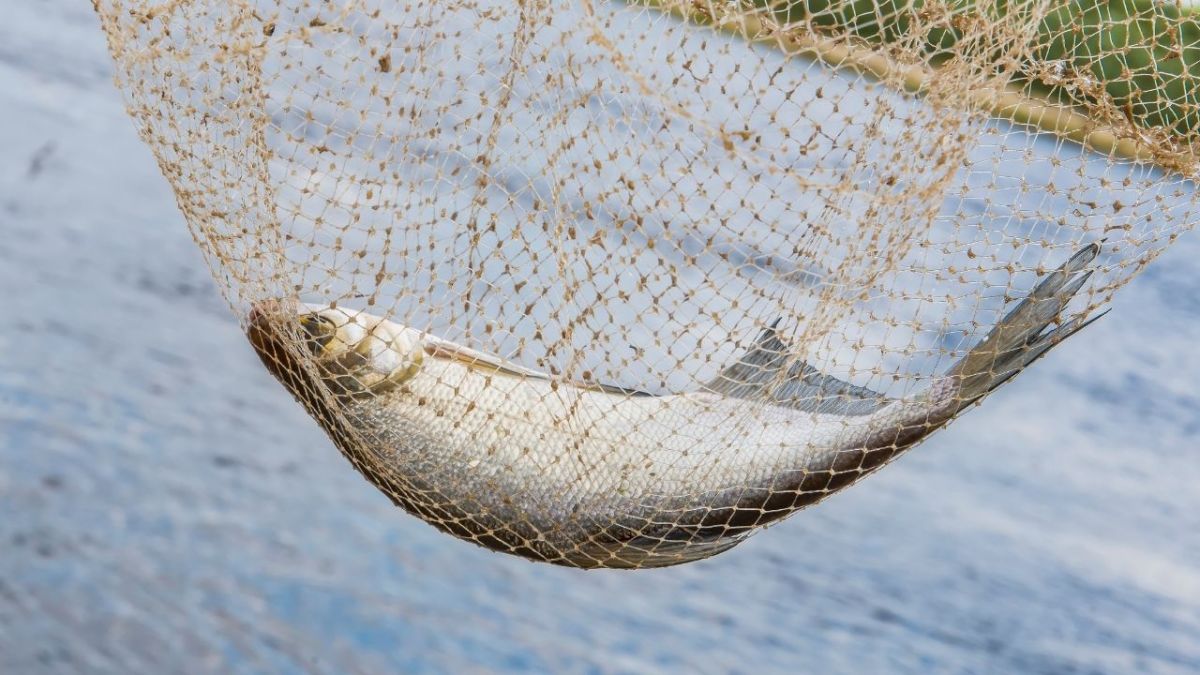
5 fishing techniques for your survival toolbox - catch fish without modern equipment
👉 The key facts from this guide
- You can catch fish by hand by moving your fingers like worms and grabbing the fish when it bites.
- Spearfishing requires patience and practice. You will need a homemade spear and will have to learn how to aim and strike.
- Fish traps are ideal if you have other tasks to do. You can make them from any container with a narrow entrance.
- Stick-shaped fishing hooks, also known as "gorge hooks," can be made from natural materials or trash. They are easy to build and can be very effective.
- If you have a net, you can place it in shallow waters and drive the fish into it.
High-quality fishing gear is undoubtedly very practical and can make catching fish easier.
However, fishing gear is also additional weight for your stay in the wilderness and in survival situations, you probably won't have it with you.
Fish, on the other hand, are a first-class source of proteins and fats. That's why I wondered how people used to catch fish!
I have extensively researched this topic and would like to share the results of my research with you here.
Below you'll find the primitive fishing methods that people have been using for thousands of years:
The history of fishing and fish-catching
Before fishing became a sport or leisure activity, it was simply about survival.
Through fossil discoveries, it is known that even Homo habilis and Homo erectus caught part of their food as fishermen about 500,000 years ago (source).
It is difficult to say how fishing was carried out, as there is no trace of tools. It is likely that the fish were pulled out of the water by hand.
More precise assumptions are made about Homo sapiens in the beginnings of fishing. Scientists suspect the origin to be between 40,000 and 10,000 years BC (source).
The oldest known stick-shaped fishing hook ("Gorge Hook") is about 16,000 - 23,000 years old and was found in a cave in East Timor. However, finds in the cave suggest that people had been fishing there for 42,000 years. The oldest curved fishing hooks (J-shaped hooks) were found in Wustermark, Brandenburg (source).
Other tribes use poisons to stun the fish and then easily retrieve them from the water.
In Egypt, fishing nets, spears, lines, and rods were used simultaneously. Small boats were also used, and metal fishing hooks were first used in 600 BC. This was recorded in both tomb paintings and various papyrus scrolls.
During the Greco-Roman antiquity, fish became an important commodity. Fishing was mainly done with nets, but it was a long way to go until the invention of the refrigerator.
Other methods had to be used to extend the shelf life. One method was fermentation and subsequent processing into "Garum", which served as a popular seasoning for other dishes. Dried fish was another way to preserve fish.
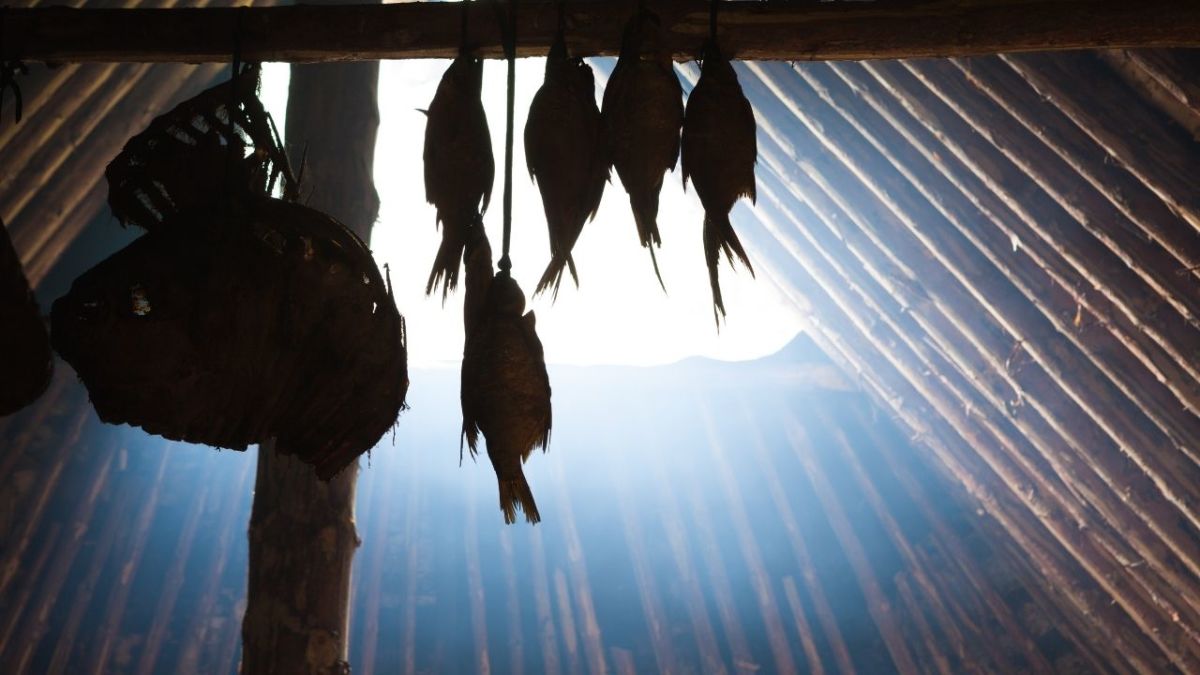
Over time, fishing has changed very little in principle but has changed a lot in detail. In this article, I want to go back several millennia and look at the most original methods with the most basic tools.
Attention: Do not catch fish using the following methods unless you are fighting for survival. In Germany, you are only allowed to catch fish with the corresponding permission (e.g., with a fishing license and a fishery card). Furthermore, most of the presented methods are not legal in Germany or require permission.
5 Original methods to catch fish
Fishing is a popular hobby for many people, but in an emergency, it is a genius way to get meat.
Fishing can help you survive, whether it's an unexpected emergency, such as getting lost, or during a long-term SHTF scenario.
Although finding food should never be your top priority (building a shelter, making a fire, and finding water are all necessary beforehand), it is important.
Here are some original methods that you may not have considered, which could possibly get you a big catch.
1. Catching fish with your hands
When I think of basic tools, my hands are often the last thing that comes to mind. However, our hands are exactly that: tools! With the right technique, we can catch fish with our hands.
Especially in North America, there is a whole sports culture that focuses on catching catfish. Catfish, or dwarf catfish, hunt in dark areas of lakes and rivers.
For example, fish typically hide in hollow tree trunks, holes under rocks or in crevices. Search for such features from the shore. If the hiding place has two entrances, cover one end quietly.
Next, reach into the hiding place with your strong hand and move your fingers like worms. Your fingers serve as bait. When the fish bites, you must grab it and pull the animal out of the water. Watch out for the barbels! They can be very sharp and injure you.
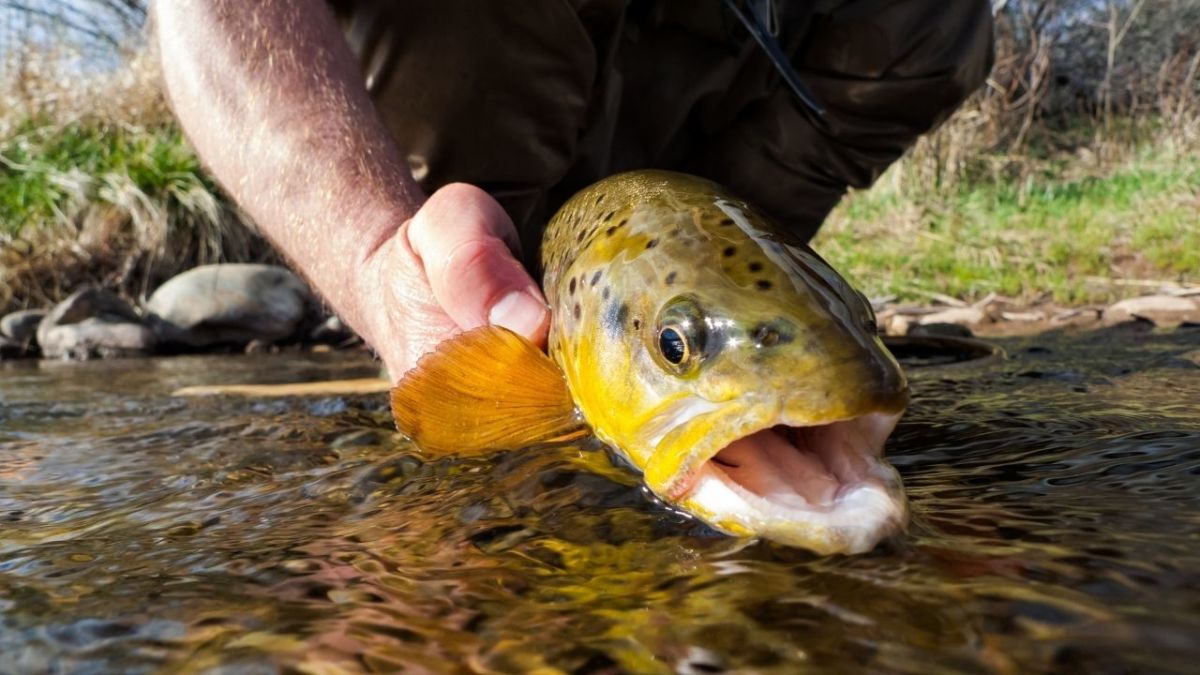
Catfish are not native to Europe, but were introduced here some time ago as breeding fish. There is a chance you can also find them here.
You can also try your luck with other fish. It requires a lot of patience and the ability to act quickly at the right moment. I have read reports of hand-caught trout.
Read also
Catch n' Cook for beginners: This is how you turn your kids into little fishing heroes – Learn in 6 easy steps how to experience a successful catch n' cook with your children – from fishing to a delicious fish meal by the water.
2. Spearfishing
Fishing with a spear is a discipline in itself and requires patience and practice. First, you need a spear, and here I will show you how to make one.
You can make it from a strong stick or piece of wood. Either make one end pointed or attach a sharp, pointed object to the front end. Stones or metal are suitable for this.
Ideally, stand in shallow water for spearfishing and remain still. The fish can get used to you and come closer to you again.
Alternatively, you can also fish from the shore. In both cases, make sure your shadow does not fall directly into the water. It blocks your view and the fish could be frightened.
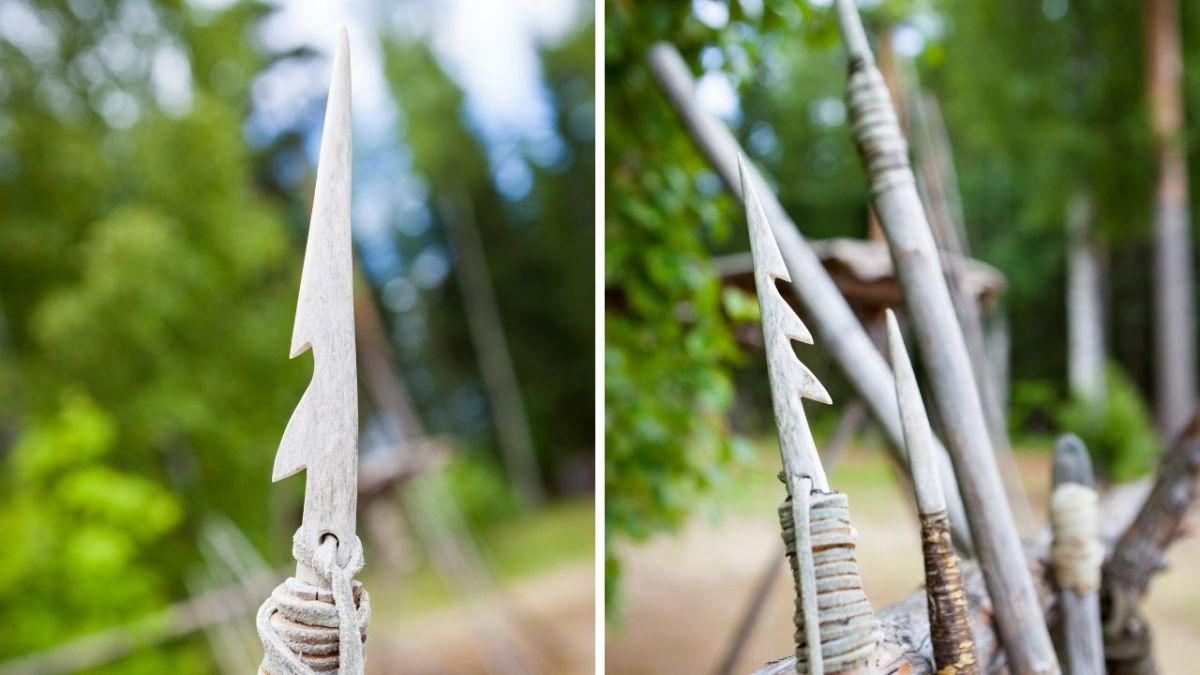
If potential prey is now within reach, strike. The first few times you will most likely miss, but don't be discouraged.
The use of the spear must be learned. Furthermore, the water slightly distorts your vision, so you have to learn to aim differently. As mentioned before: practice makes perfect.
Stick with it and you'll learn an essential survival skill!
Also read:
The ultimate survival list: These 7 things you need on a deserted island - Discover the 7 indispensable pieces of equipment for a deserted island. With our ultimate survival list and tips, you'll be well-equipped.
3. Fish traps
This method is ideal if you have other tasks to do meanwhile.
It requires initial work and can be used multiple times. However, success here depends largely on the location, and even then, nothing is guaranteed.
You should definitely have a flowing body of water nearby, but your trap should not be washed away either.
You can use any container with a narrow entrance for the trap. This will lure in fish or crustaceans, but they won't come back out.
You can use a plastic or glass bottle, or something similar.
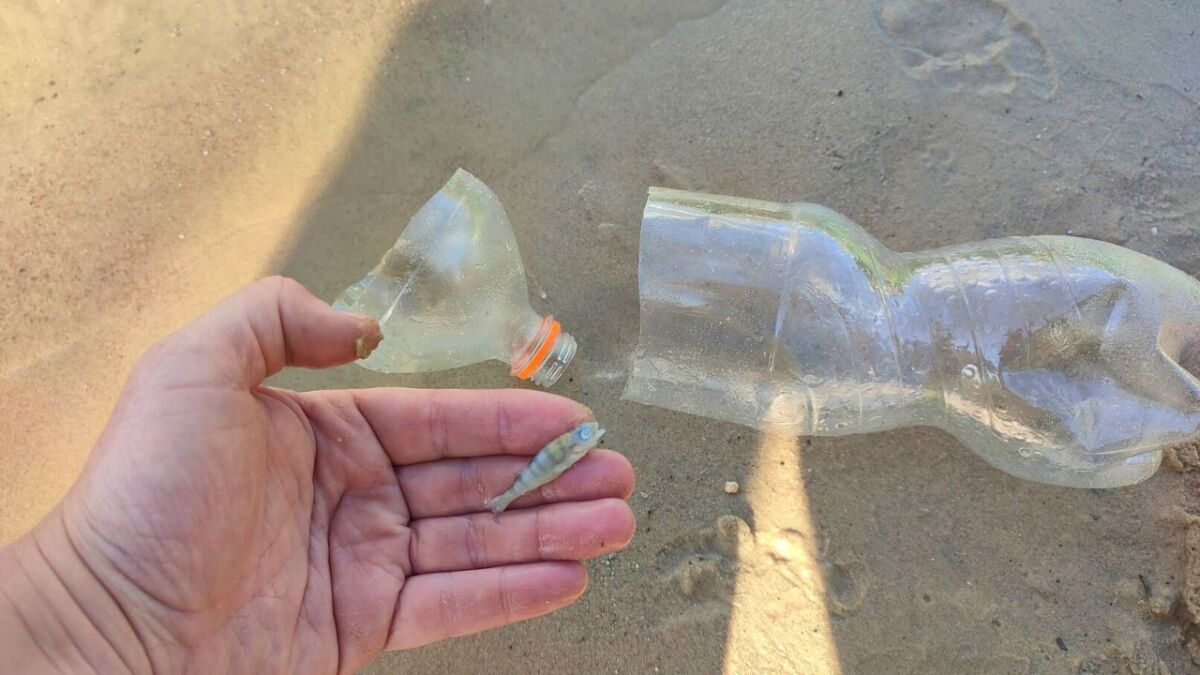
In the most creative case, you build your fish trap from natural resources such as branches, bark, or anything else that comes to mind.
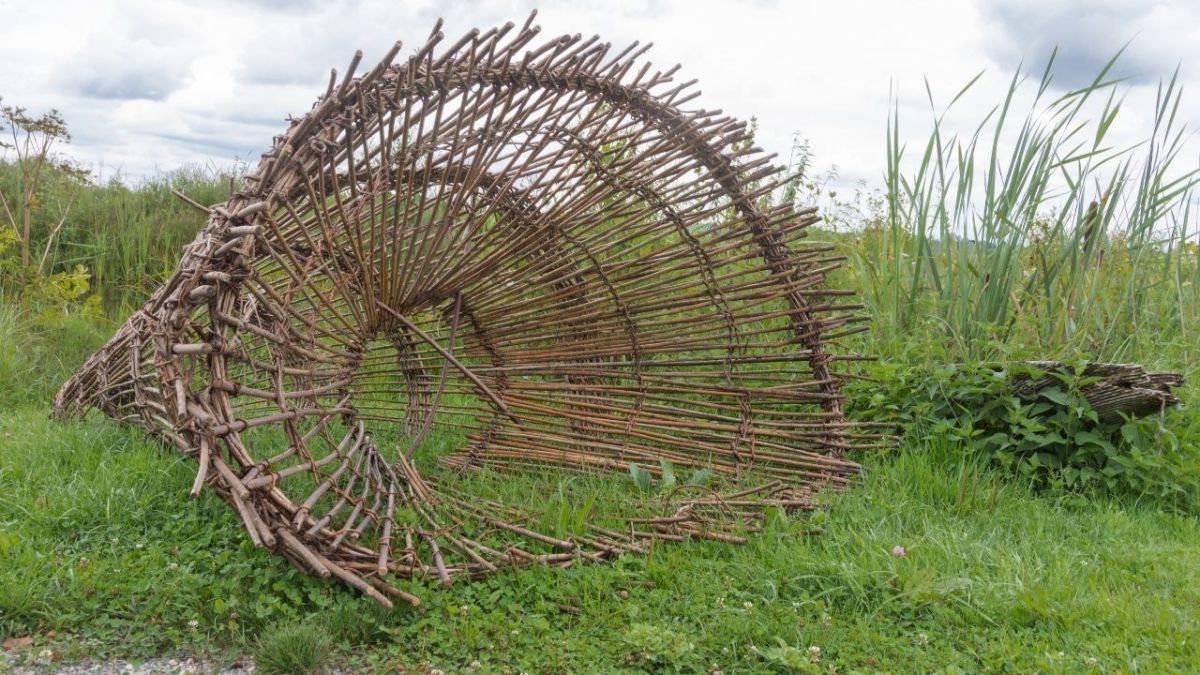
You now place the trap in the water and align it with the entrance against the flow direction of the water. After a few hours or a night, you can examine the trap for prey.
You can also build this type of trap slightly differently with stones, as you can see in the picture:
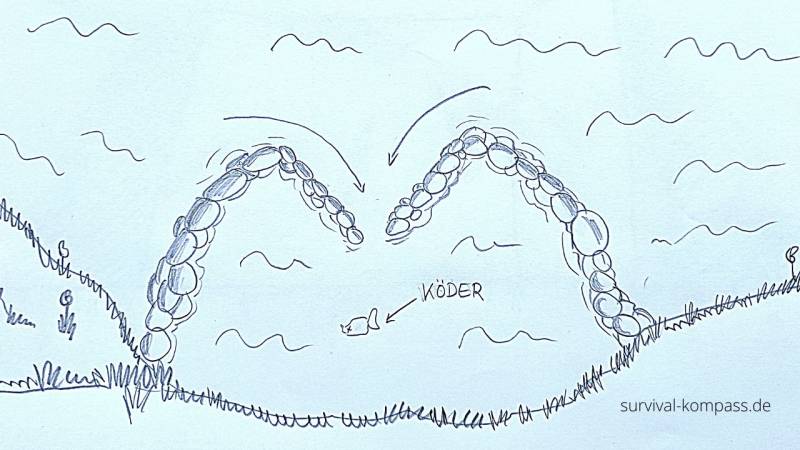
4. Gorge Hooks
As mentioned above, it is possible to make fishing hooks from natural materials or even from garbage.
The Gorge Hook is a basic but highly effective tool that works just as reliably today as it did a thousand years ago. And in a survival scenario, it can be a genuine lifesaver.
The basic requirement is to carve a piece of wood or bone that can become lodged in the fish's esophagus or soft intestines to effectively fish without barbs.
It is an effective method for catching fish if protein acquisition is the main goal. Carp, catfish, trout, and bass eagerly suck up bait. This suction technique brings the bait deep into the fish's throat. If all goes well, the Gorge Hook turns sideways and gets stuck.
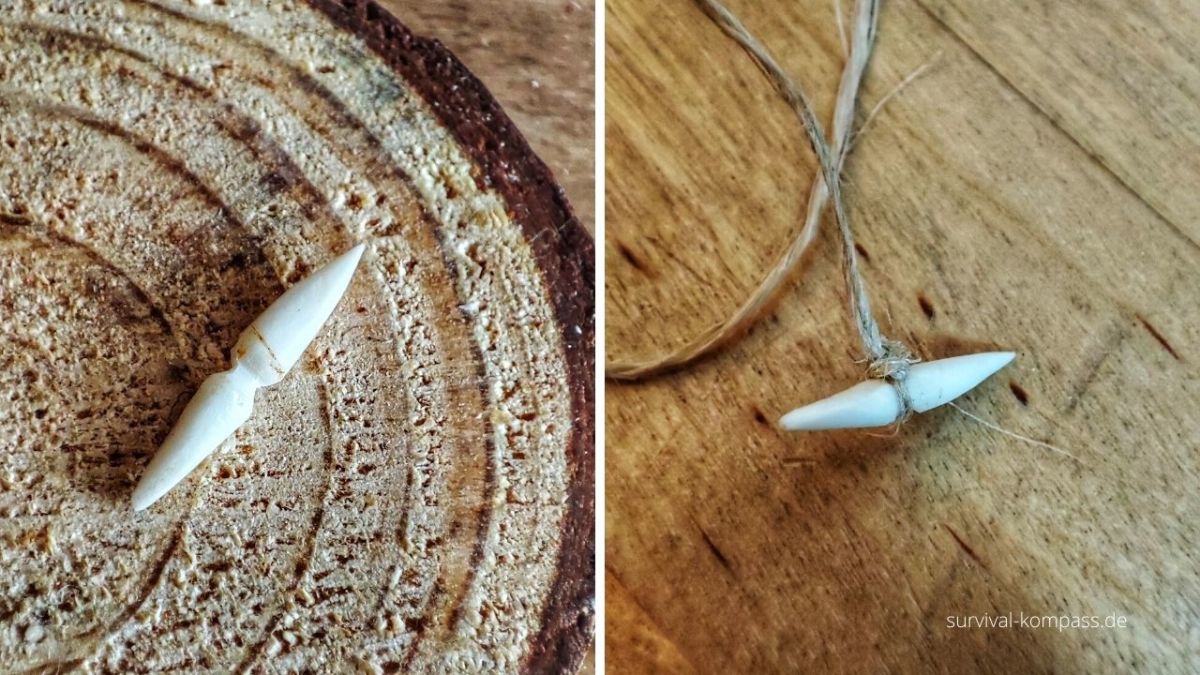
Building a gorge hook is easy:
1. First, find a thin, rigid piece of bone, horn, or hardwood. It should be about 2 to 2.5 cm long, depending on what fish you're hunting. Smaller hooks are good for smaller fish.
2. Sharpen both ends to a point and carve a flat groove in the middle, creating a notch where the fishing line can sit. Tie monofilament line, dental floss, or cordage to the hook – whatever string-like material you can find in an emergency – and secure the knot tightly in the carved groove.
3. Finally, bait the gorge hook with live bait such as a grasshopper, beetle, fish, or lobster. This is best achieved by fully skewering the hook into the bait, so it remains parallel to the line and pointing up and down. Then, make sure your line is long enough to reach far into the water. Attach the end without bait to a stick, branch, or anchor. Then, place the baited hook in the most promising piece of water you can find and wait for a fish to bite. Be sure the fish has fully swallowed the bait to ensure that the hook turns and embeds, guaranteeing your meal.
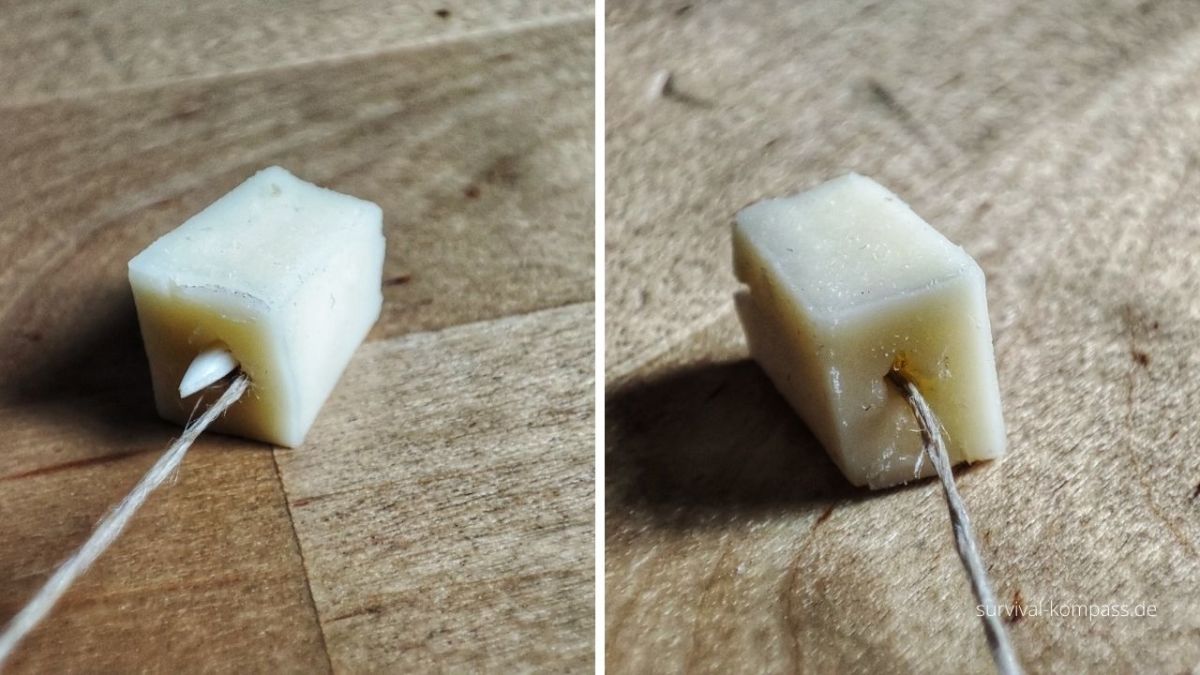
As an ideal fishing line, plant fibers (such as those from the stinging nettle, for example) that you twist together are suitable. Practice is also necessary here because you need cords and ropes almost everywhere.
In my guide to twisting ropes, you will find everything you need to know about it.
5. Fishing with a net
A prerequisite for this method is a net. Unfortunately, I have often seen remains of nets washed up on the shore, both at the beach and on rivers.
You can certainly make use of those. Alternatively, you can weave your net. This requires some skill, and you should bring a lot of time with you.
Once you have a net, the rest is simple. You just need to know where to place your net so that as much fish as possible swim into it. It may even be necessary to go into the water yourself and drive the fish into your net.
This works most reliably in shallow waters.

Conclusion on fishing techniques for your survival toolbox
If you happen to be without your fishing equipment or kit, you now have some methods for catching fish nonetheless.
If you have enough spare time, you can combine the methods as you see fit. Putting a trap in the water is quickly done.
Thereafter, you can equip yourself with a spear and go hunting.
As always: be aware that the fish you catch are living beings. Appreciate and be grateful for the food that nature provides for you!

Sources for the guide
http://www.historyoffishing.com/
https://www.fieldandstream.com/blogs/field-notes/survival-fishing-how-to-make-a-gorge-hook/
https://www.battlbox.com/blogs/battlbox/no-rod-and-reel-try-these-survival-fishing-techniques
https://de.wikipedia.org/wiki/Katzenwelse
https://survivallife.com/primitive-fishing-techniques/

Author of the guide
Martin Gebhardt
Hey, I'm Martin. On my blog, you will learn the basics and numerous details about living in the wild. I think survival, bushcraft and the good life in nature are the keys to happiness. Find me here on Instagram or on YouTube. You can find more about my mission on the About Me page.
Was this guide helpful?
33 people found this guide helpful.
5.00 out of 5 points (33 Ratings)
Comments (0)
This post may contain affiliate links. So if you click on the links and make a purchase, I will receive a small commission at no additional cost to you. Click here, to learn more about it.


